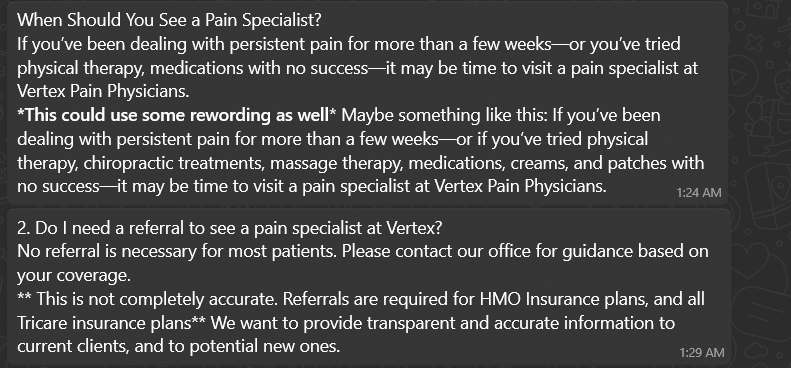What Are the Most Common Causes of Hip Pain in Adults?

Strong 8k brings an ultra-HD IPTV experience to your living room and your pocket.
Hip pain is a common condition that affects adults of all ages. It can significantly impact daily activities and quality of life. Understanding the underlying causes of hip pain is essential for determining the best course of treatment and management. In this blog post, we’ll explore the most common causes of hip pain in adults, the symptoms associated with them, and the treatment options available to help alleviate discomfort.
What Is Hip Pain?
Hip pain refers to any discomfort or pain that originates from the hip joint or the surrounding muscles, tendons, or ligaments. While the pain may be localized around the hip area, it can also radiate to the groin, thigh, or buttocks.
Hip pain is often characterized by a dull, aching sensation, but in some cases, it may be sharp or stabbing. Depending on the cause, the pain can worsen with movement, especially activities like walking, climbing stairs, or bending. It can also become more noticeable at night or after extended periods of rest.
Common Causes of Hip Pain in Adults
Here are the most common causes of hip pain in adults, summarized for quick reference:
Osteoarthritis (OA)
Cause: Degenerative joint disease where cartilage breaks down, leading to bone-on-bone friction.
Symptoms: Stiffness, pain while walking, swelling, and limited mobility.
Treatment: NSAIDs, physical therapy, and in severe cases, hip replacement surgery.
Hip Bursitis
Cause: Inflammation of the fluid-filled sacs (bursae) that cushion the hip joint, often due to overuse.
Symptoms: Sharp pain on the outer hip, tenderness, pain when walking, and discomfort at night.
Treatment: Rest, ice, NSAIDs, corticosteroid injections, and physical therapy.
Tendinitis
Cause: Inflammation of the tendons connecting muscles to bones, typically from overuse or injury.
Symptoms: Pain and tenderness around the hip joint, stiffness, and swelling.
Treatment: Rest, physical therapy, anti-inflammatory medications, and surgery if necessary.
Hip Fractures
Cause: A break in the bone of the hip joint, usually from trauma or a fall.
Symptoms: Intense pain, inability to bear weight, bruising, and swelling around the hip.
Treatment: Surgery to repair the fracture, followed by physical therapy for recovery.
Labral Tears
Cause: Tears in the cartilage ring that stabilizes the hip joint, often due to injury or repetitive motion.
Symptoms: Pain in the groin or hip, clicking or locking sensations, and limited range of motion.
Treatment: Rest, anti-inflammatory meds, physical therapy, and arthroscopic surgery in severe cases.
Muscle Strains
Cause: Stretching or tearing of muscles surrounding the hip joint, often due to physical activity or overuse.
Symptoms: Pain and tenderness in the hip muscle, weakness, and difficulty moving the leg.
Treatment: Rest, ice, compression, elevation (R.I.C.E.), physical therapy, and pain medications.
Risk Factors for Hip Pain in Adults
Certain factors can increase the likelihood of developing hip pain. These include:
Age: Older adults are more likely to develop conditions like osteoarthritis or hip fractures.
Obesity: Carrying excess weight puts additional stress on the hip joint, increasing the risk of pain and injury.
Physical activity: Repetitive activities or overuse of the hip joint can lead to conditions like tendinitis or bursitis.
Previous injuries: A history of hip injuries or surgeries can increase the likelihood of developing hip pain.
How to Diagnose the Cause of Hip Pain
If you’re experiencing persistent hip pain, a healthcare provider will perform a thorough evaluation to determine the cause. This may involve:
Physical examination: The doctor will assess the range of motion, strength, and tenderness around the hip joint.
Imaging tests: X-rays, MRIs, and CT scans may be used to examine the bones and soft tissues for signs of damage or abnormalities.
Joint aspiration: A small sample of fluid may be taken from the joint to check for signs of infection or inflammation.
Treatment Options for Hip Pain
The treatment for hip pain depends on the underlying cause. Here are some common approaches:
Non-Surgical Treatments
Physical therapy: Targeted exercises to improve strength, flexibility, and mobility.
Heat/ice therapy: Applying ice or heat can help alleviate swelling and discomfort.
Assistive devices: Using crutches or a cane to reduce pressure on the hip joint.
Surgical Treatments
Hip replacement surgery: In cases of severe arthritis or hip damage, a hip replacement may be necessary.
Hip arthroscopy: A minimally invasive procedure used to treat labral tears or remove damaged tissue.
Other surgical options: Procedures like tendon repair or fracture fixation may be required in certain cases.
Alternative Therapies
Acupuncture: In some cases, acupuncture may help alleviate pain and improve mobility.
Chiropractic care: Chiropractic treatments can help restore proper alignment in the hip joint.
Regenerative medicine: Platelet-rich plasma (PRP) injections can help promote healing in soft tissues and cartilage.
Schedule a Consultation Today
If you're experiencing persistent hip pain, don’t wait to seek professional help. Schedule an appointment with a pain management specialist at Vertex Pain Physicians to get a proper diagnosis and explore treatment options tailored to your needs. Don’t let hip pain control your life—take the first step toward relief today!
Conclusion
Hip pain is a common issue for many adults, and its causes can vary widely. Whether due to arthritis, tendinitis, bursitis, or an injury, it’s essential to seek an accurate diagnosis and appropriate treatment. Non-surgical options like physical therapy, medications, and lifestyle modifications can provide significant relief for many individuals, while surgical interventions may be necessary for more severe conditions.
If you're dealing with persistent hip pain, it’s important to consult a healthcare professional to explore treatment options tailored to your needs.
FAQs About Hip Pain
What is the most common cause of hip pain?
Osteoarthritis is the most common cause, particularly in older adults.
Can hip pain be prevented?
Regular exercise, maintaining a healthy weight, and avoiding repetitive stress can help prevent hip pain.
How do I know if I need surgery for hip pain?
Surgery is often considered when non-surgical treatments have failed, or in cases of severe fractures or arthritis.
Is hip pain related to arthritis?
Yes, osteoarthritis is a common cause of hip pain.
Can physical therapy help with hip pain?
Yes, physical therapy can improve strength, flexibility, and mobility, reducing hip pain.
What is the best treatment for hip pain?
The best treatment depends on the cause but may include physical therapy, medications, or surgery.
Can hip pain occur at night?
Yes, many people with hip conditions experience increased pain at night.
How long does it take to recover from hip pain?
Recovery time varies depending on the cause and treatment but can range from a few weeks to several months.
What exercises are good for hip pain?
Low-impact exercises like swimming, cycling, and gentle stretches can help relieve hip pain.
When should I see a doctor for hip pain?
If the pain persists or worsens, or if you experience difficulty moving or bearing weight, it’s important to consult a doctor.
Note: IndiBlogHub features both user-submitted and editorial content. We do not verify third-party contributions. Read our Disclaimer and Privacy Policyfor details.







